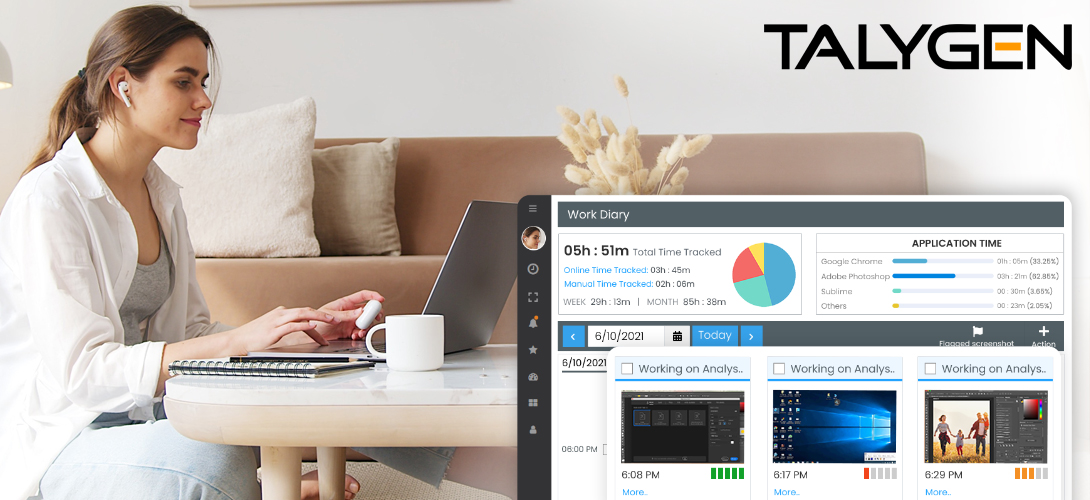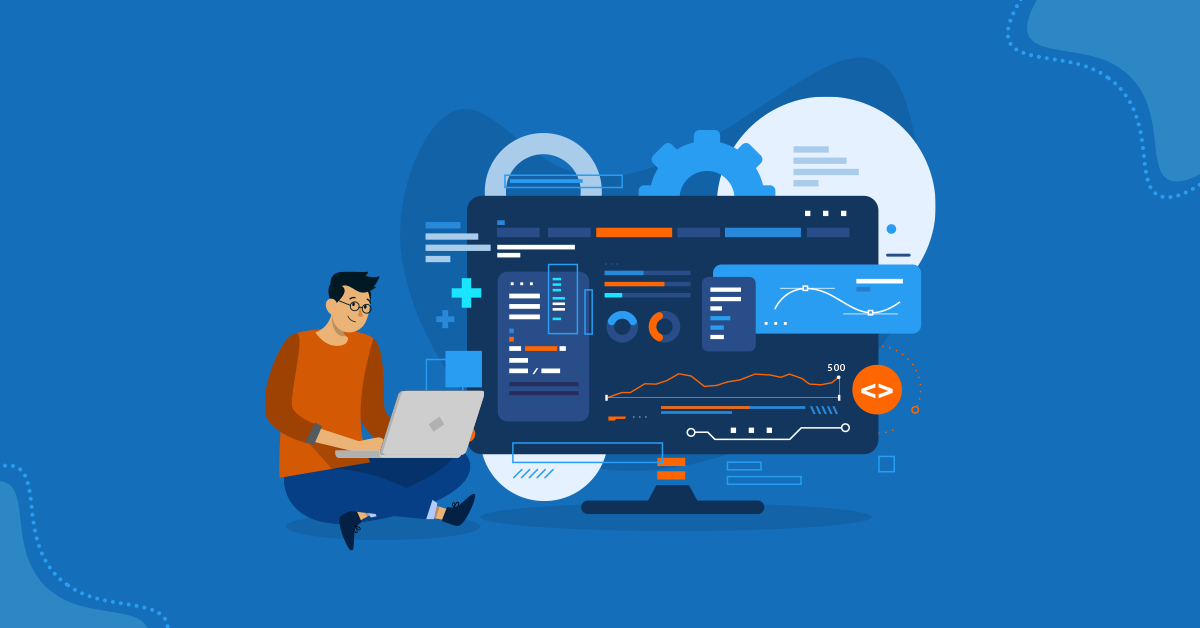Handy Tips For Deciding On Time Tracking Monitoring Software
What Is The Software For Employee Monitoring? How Can I Choose It?The term employee monitoring software is used to refer to the software that companies use to monitor their employees' activities while they work. It allows employers the ability to collect information on a variety of aspects related to employee behavior. This includes internet usage and application usage as well as screenshots, keystrokes and other information. The main purpose behind software for monitoring employees is to improve productivity, make sure that employees are in conformity with the company's policies, safeguard sensitive information and address security concerns. When selecting an employee monitoring software, there are several things to think about. Here are a few key things to consider the following: Features - Determine which features your company requires. The features include monitoring email, activity monitoring, blocking websites keystroke recording and tracking the usage of applications, and monitoring email. Prioritize features that align with your goals for monitoring.
Privacy and Compliance- Make sure that the software follows legal and ethical guidelines for monitoring employees. Know the relevant laws and regulations in your region. Software that respects employee privacy must be transparent and customizable settings.
User-Friendliness: Think about the software's usability and accessibility. Easy-to-use interfaces and simple setup procedures will speed up and make it easier to implement. Consider customizable dashboards with easy-to-use reporting tools to assist you with navigation and interpret data.
Integration and Compatibility: Verify the software's compatibility with your IT infrastructure. This includes operating systems, email software, project management platforms, and collaboration tools. It is essential to ensure seamless monitoring, without affecting your daily routine.
Data Security: Evaluate the software's security features to safeguard the collected data. Security protocols, encryption, secure data storage, as well as access control are crucial. Make sure the software vendor is recognized for its data security record and has robust security measures.
Scalability: Think about how the software will scale to meet the demands of your growing company. Select a program that can easily increase its capacity to meet the needs of your company if you are planning on hiring more people or opening new locations.
Reporting and Analytical Capabilities- Review the reporting and analytical capabilities of the software. Consider features that can give you a comprehensive view of the performance of employees, their timing allocation, and trends. Customized analytics and reports will assist you in identifying areas for improvement and help you make better decisions.
Customer Support: Evaluate the quality of support offered by the software vendor. The availability of their support, the quality of support, as well as their response time are all crucial aspects. Good customer support ensures prompt help when issues arise.
Cost- Be aware of the pricing model of the software. It could be a once-off payment that is subscription-based, or usage based. Learn about the pricing structure, which includes any additional charges for support, updates or other features. Your budget should be balanced and the value of features against what you can afford.
Transparency and Communication with EmployeesTransparency and Communication with Employees - Communicate clearly with your employees about the use and implementation of software for monitoring. Be clear about the goal the work scope, and expectations in relation to the monitoring. Be sure to address any concerns, and ensure they are aware that their privacy will still be protected.
These elements will help you make a more informed choice about the employee monitoring software you pick. See the best time tracking monitoring services for blog advice.

What Are The Main Features And Features Of The Software For Tracking Employees?
Employee monitoring software includes many features to monitor and analyze the activities of employees. The specific features can differ across different software solutions However, here are a few commonly used features in the employee monitoring software: Activity Monitoring- This feature captures and records employee actions such as websites visited, applications used as well as the files that are accessed and the time spent on each task. It gives an extensive overview of how employees spend their time working.
Keystroke logging- Keystroke logging records all keystrokes typed by employees. It is a way to detect productivity bottlenecks and can also detect illegal actions and gather evidence for investigations.
Screenshots & Screen Recordings- Some programs take screen captures or record screens of employees at regular intervals. This feature is utilized to track performance, ensure the compliance of employees, or resolve problems.
Internet Usage Tracking This feature allows employees to monitor their internet activities, including the websites they browse, search results and downloads. It assists in identifying excessive non-work-related browsing, potential security risks or violations of policies.
Application Usage tracking - This feature monitors the use of applications during work hours by employees. It helps to identify unapproved or excessive usage of applications by providing insights into the apps that are frequented.
Email Monitoring: Employers can check the content of emails received and sent by employees, as well as attachments, as well as the contents of emails. It assists in ensuring conformity with policies of the company, stop leakage of data and investigate any suspicious behavior.
Tracking of documents and files This feature monitors access to, modifications to, and transfers. It helps safeguard sensitive data by monitoring document collaboration and ensuring compliance with data protection policies.
Remote Monitoring lets employers supervise employees who work remotely or from various locations. Employers can keep track of employees' activities and productivity no matter where they are.
Productivity Analysis Software to monitor employee performance often comes with productivity analysis tools that provide information on employees' time allocation and patterns of work. These analyses allow for the analysis of areas that can be improved, and also help to optimize workflow.
Analytics and Reporting- Robust features for reporting and analytics create detailed reports using the data that is collected. These reports provide valuable information about employee performance and the distribution of resources.
Compliance and Policy Management: Some software solutions come with features to ensure the compliance of both company policies and regulations. They allow employers establish and enforce policies of their company regarding acceptable use of computers.
Alerts and Notifications Alerts alert managers and employers about certain situations. They are able to alert you about suspicious behaviors, such as excessive use of the internet or attempts to gain access to restricted sites.
It is essential to be aware that these features may differ dependent on the software you select. When selecting a software, take into consideration the features that are compatible with your objectives for monitoring and conform with ethical and legal guidelines in your jurisdiction. Have a look at the most popular employee monitoring services for blog examples.

How Can Employee Surveillance Software Conform To The Compliance And Privacy Laws?
Employee monitoring software must be in compliance with the privacy and compliance laws. The exact legal requirements differ from one jurisdiction to the next, however these are the most common methods that employee monitor software adheres to privacy and compliance laws: Consent and Notice - Many jurisdictions mandate informed consent for employees and prior notification of the monitoring activity. The software used to monitor employees usually has tools that allow employers to clearly communicate their monitoring policy to employees. This could include providing written notices, obtaining consent through consent forms, or even implementing an employee handbook which outlines how to monitor practices.
Transparent Monitoring Policies- Employee monitoring policies promote transparency because they help employees comprehend the kind of information that is collected, what the objective for monitoring is and to how monitoring activities are carried out. A clear and complete policy helps employees know the limits of monitoring and their rights to privacy.
Data minimization - To be able to be in compliance with privacy laws and employee monitoring software, the concept of data minimization is often utilized. Data minimization is the process of ensuring that only essential data is gathered, kept and avoided. This software helps to reduce the risk of privacy breaches by only collecting the data needed to keep track of.
Certain software for employee surveillance anonymizes, or aggregates, information to ensure the privacy of employees. Data gathered is anonymized to eliminate personal information that can be identified as being personally identifiable. Data from several employees is combined to give insight into the group without identifying individuals.
Secure Data Storage and encryption - The security of collected data is an important concern for monitoring software designed to monitor employees. It typically utilizes secure data storage practices and encryption methods to shield the data from unauthorised access, breaches, or disclosures that are accidental. This also includes safeguarding data traveling and also in stationary.
Access Controls and Restricted Permissions Software for monitoring employees offers access control with greater granularity to ensure compliance. Employers can limit access to monitoring data for authorized users who need it for legitimate reasons like HR employees or the designated administrator.
Rights and Remedies for Employees Rights and remedies The protection of the rights of employees is essential in ensuring compliance with the privacy and compliance laws. Software for monitoring employees has features that permit employees to view their own monitoring information and make requests for corrections. Employees are able to exercise their rights and seek recourse in the event of privacy breaches.
Compliance with Data Protection Regulations – Software to monitor employee performance is designed to comply with the applicable regulations. For example, the General Data Protection Regulations of the European Union and the California Consumer Privacy Acts of the United States. The compliance process includes the implementation of measures to safeguard personal data and respect the rights of data subjects.
Apart from using employee monitoring tools, organizations should consult experts in the field of law and remain up to date regarding the latest laws and regulations in their jurisdiction. Compliance to privacy and compliance regulations requires a comprehensive strategy that goes beyond the software. This means explicit policies, training for employees, and continuous compliance monitoring. See the top time tracking monitoring services for site examples.
